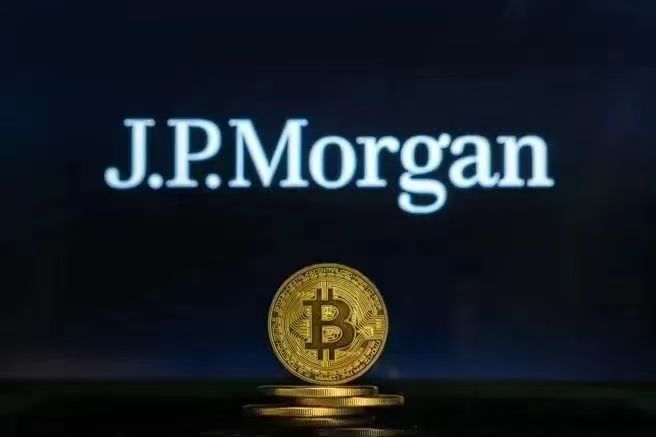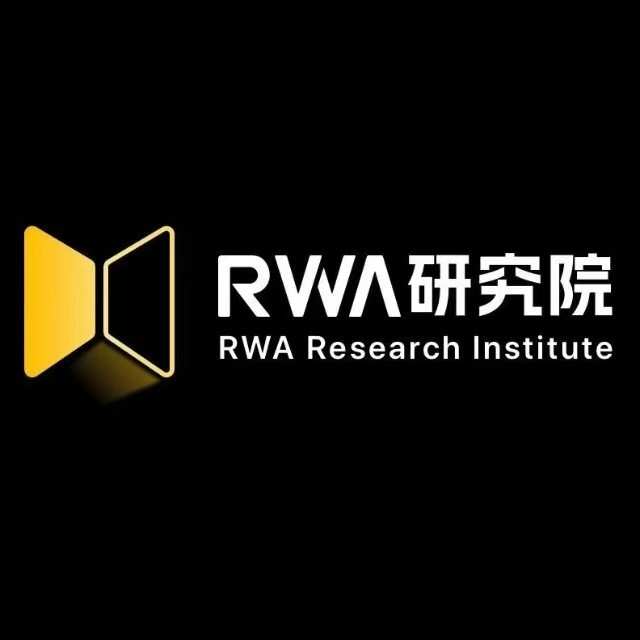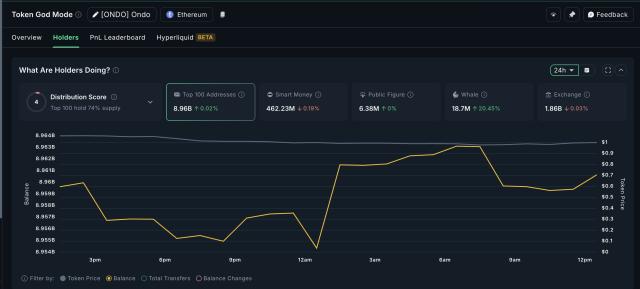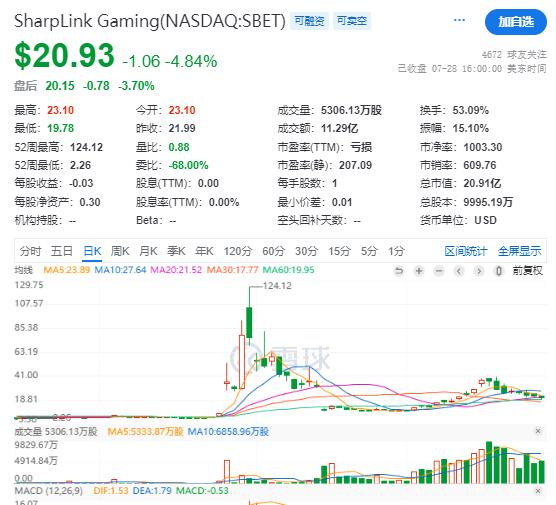"Just as I believe you should not smoke, but I defend your right to smoke. Now I defend your right to buy Bitcoin, go ahead," said Jamie Dimon, CEO of JPMorgan Chase, in a recent public statement. This statement marks a significant attitude shift from the Wall Street tycoon who once called Bitcoin a "fraud".
Almost simultaneously, JPMorgan Chase is actively preparing a breakthrough service: allowing clients to obtain loans using cryptocurrencies like Bitcoin and Ethereum as collateral, potentially launching as early as 2026. This move not only represents a major transformation of traditional banking but also echoes the recent milestone legislation in the United States - the National Stablecoin Innovation and Regulation Act (GENIUS Act). With the establishment of the regulatory framework, a digital asset revolution led by Wall Street giants is comprehensively unfolding.

Policy Breakthrough: Stablecoin Legalization Opens a New Era of Digital Assets
In July 2025, US financial regulation reached a historic moment. President Trump officially signed the GENIUS Act, establishing the first federal-level regulatory framework for stablecoins in the United States.
This act, together with the currently under review CLARITY Act, marks the "breaking of the ice" in US digital asset regulation, shifting market focus from policy negotiations to actual infrastructure construction.
Bank of America Merrill Lynch predicts in its latest research report that within the next 2-3 years, stablecoins will have a "clearly visible" disruptive impact on traditional bank deposit bases and payment systems.
The strategic significance of the act far exceeds the technical level. The US Treasury Secretary clearly stated that the act will stimulate market demand for US Treasury bonds, alleviating current US debt pressure. According to calculations, if the stablecoin market expands to $2 trillion, issuers would need to allocate approximately $1.8 trillion in US Treasury bonds, potentially further lowering US bond yields.
"The regulatory breakthrough opens the door for banking innovation in digital assets," commented a Wall Street analyst. "Whoever first gains the advantage in stablecoins and RWA will occupy the high ground in the next round of financial competition."

JPMorgan Chase: From Skeptic to Digital Asset Leader
JPMorgan Chase's transformation journey is highly dramatic. Under Dimon's leadership, this Wall Street giant was once known for its critical stance on cryptocurrencies. Now, it is becoming a model for traditional financial institutions embracing digital assets.
In a recent earnings call, when asked about cryptocurrency payment technology, Dimon stated: "We will simultaneously participate in JPMorgan Chase's deposit coin and stablecoin to understand it and become proficient in it." This pragmatic attitude reflects the strategic adjustment of the entire banking industry facing the digital asset wave.
JPMorgan Chase has launched JPMD, the first tokenized deposit product for institutional clients in the US banking industry, while actively exploring cryptocurrency-collateralized loan business. According to informed sources, the plan will allow clients to use digital assets like Bitcoin and Ethereum as collateral, potentially launching as early as 2026.
Due to Basel III's requirement of a 1250% risk weight for direct cryptocurrency exposure, JPMorgan Chase will likely need to rely on external custody institutions like Coinbase to handle defaulted collateral. This cooperation model provides a new perspective for the integration of traditional finance and crypto ecology.
RWA Track: Wall Street Giants' Tokenization Race
While the market focuses on stablecoins and cryptocurrency-collateralized loans, a race around Real World Assets (RWA) tokenization has quietly begun on Wall Street.
(Translation continues in the same manner for the rest of the text)Meanwhile, UBS Group actively participates in the Hong Kong Monetary Authority's "Evergreen Project" by issuing tokenized green bonds through a "hybrid model". This innovation not only lowers the technical threshold but also promotes the on-chain application of sustainable finance, injecting new vitality into the global green financial market. Switzerland's series of measures demonstrate how traditional finance can drive asset digitalization under central bank support and a clear regulatory framework. Through this initiative, Switzerland provides valuable experience for other countries in terms of regulatory compatibility and infrastructure construction for global RWA tokenization, and helps drive the digital transformation of the global financial system.

·Citigroup: Private Equity Fund Tokenization Experiment
In July 2025, Citigroup, in collaboration with WisdomTree and Wellington Management, launched an end-to-end private equity fund tokenization experiment on the Avalanche Spruce subnet designed for financial institutions. The experiment covers token transfer, secondary trading, and collateral loan functions, aiming to verify the potential for compliance automation and enhance private asset liquidity. This move is a key step for Citigroup to expand from the 2024 launch of "Citi Token Services" (deposit tokenization) to higher-value, more complex asset classes (private equity), continuing its strategy of building institutional-level RWA infrastructure.
Citigroup's experiment with private equity fund tokenization on the Avalanche Evergreen subnet reveals a new trend in traditional finance's RWA layout: seeking balance between "compliance" and "on-chain efficiency". Facing long-standing issues of low liquidity and transparency in private assets, Citigroup uses a permissioned chain architecture to bypass public chain KYC/AML risks while retaining blockchain advantages such as clearing automation and asset composability. This "semi-open, strongly isolated" experimental model is becoming the mainstream choice for traditional financial institutions. More importantly, Citigroup has moved "asset on-chain" from peripheral custody to core business restructuring, marking a new phase of RWA tokenization competition from "can it be done" to "who can do it deeper and faster".

·Deutsche Bank: Stablecoin and Tokenized Deposits
In June 2025, Deutsche Bank announced active evaluation of issuing Euro stablecoins and developing a tokenized deposit system, aimed at optimizing payment efficiency and significantly reducing cross-border settlement costs. The strategy may involve independent issuance or seeking alliance cooperation. Under the compliance framework provided by the EU's Markets in Crypto-Assets Regulation (MiCA), this move is not just about efficiency improvement, but a strategic effort to compete for digital financial infrastructure discourse in the Eurozone, especially in the global stablecoin landscape dominated by the US dollar.
This initiative is not merely a technical innovation to improve payment efficiency and reduce cross-border settlement costs, but a far-reaching strategic layout aimed at competing for the leadership of digital financial infrastructure in the Eurozone.
In the global stablecoin market dominated by the US dollar, the issuance of Euro stablecoins reflects Deutsche Bank's desire for digital financial discourse in the Eurozone. By issuing Euro stablecoins, Deutsche Bank can not only enhance its competitiveness in cross-border payments and settlements but also take a leading position in the digital transformation of the European financial market. The successful implementation of this strategy can effectively promote the circulation of the euro in the digital financial ecosystem and enhance the Eurozone's influence in the global financial system.
Deutsche Bank's strategy is based on the compliance guarantee of the MiCA regulatory framework, promoting the deep integration of financial asset tokenization and digital asset infrastructure. By developing a tokenized deposit system, Deutsche Bank not only brings a digital solution to traditional deposits but also paves the way for large-scale asset tokenization. This transformation can not only improve asset liquidity and reduce cross-border settlement costs but also strengthen cross-border cooperation among financial institutions. Deutsche Bank's layout indicates that traditional financial institutions are driving the upgrade of the global payment system through digital asset technology, and also suggests that RWA tokenization will become a core competitiveness in the digital asset field.

Challenges and Prospects: The Crossroads of Digital Asset Integration
Despite the high enthusiasm, traditional banks still face multiple challenges on the path to embracing digital assets. Interoperability, cost barriers, and customer needs are currently the most prominent issues.
Based on the need for interoperability and a massive existing customer base, banks seem more inclined to launch stablecoin solutions through alliance formation. The Bank of America Merrill Lynch report points out that although banks are actively positioning themselves, current customer interest in stablecoins remains "tepid". However, almost all banks indicate that they are closely monitoring developments and are prepared to take swift action once customer demand accelerates.
Cross-border payments are viewed as the most promising breakthrough. US Bank CEO Gunjan Kedia notes that while stablecoins may intensify competition in fund management services, they will have little impact on bank card and merchant acquiring businesses.
Looking ahead, with the implementation of the GENIUS Act and the advancement of the CLARITY Act, the integration of digital assets and traditional finance will enter the fast lane. As JPMorgan takes the first step in crypto-backed mortgages, Citigroup delves into private equity tokenization, and Deutsche Bank explores fund tokenization, the fusion of traditional finance and digital assets has become irreversible.
The future form of finance is quietly being built on the blockchain. When the most conservative banking giants on Wall Street embrace digital assets, and when Dimon, who once called Bitcoin a "fraud", begins to defend people's right to buy Bitcoin, a deep transformation of the financial system has quietly begun.
The result of this transformation will determine who will control the financial discourse in the digital economic era.
Author: Liang Yu Editor: Zhao Yidan







